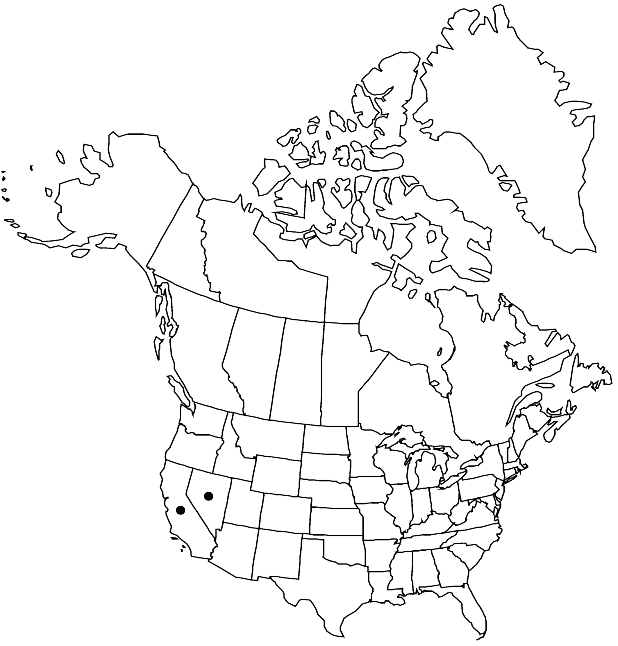Boechera bodiensis
Novon 13: 384. 2003.
Perennials; long-lived; (cespitose); apomictic; caudex somewhat woody. Stems usually 1 per caudex branch, arising from center of rosette near ground surface, 1.5–3.5 dm, densely pubescent proximally, trichomes short-stalked, 5–10-rayed, to 0.7 mm, sparsely pubescent or glabrous distally. Basal leaves: blade narrowly oblanceolate, 1–3 mm wide, margins entire, ciliate proximally, trichomes to 0.7 mm, surfaces densely pubescent, trichomes short-stalked, 5–10-rayed, 0.08–0.25 mm. Cauline leaves: 4–9, not concealing stem; blade auricles 0.5–2 mm, surfaces of distalmost leaves pubescent. Racemes 8–25-flowered, usually unbranched. Fruiting pedicels ascending to divaricate-ascending, straight, 3–7 mm, pubescent, trichomes appressed, branched. Flowers ascending at anthesis; sepals pubescent; petals lavender to purple, 4–5 × ca. 1 mm, glabrous; pollen spheroid. Fruits divaricate-ascending, not appressed to rachis, not secund, straight or curved, edges parallel, 4–6.2 cm × 1.2–1.8 mm; valves glabrous; ovules 48–68 per ovary; style 0.1–0.2 mm. Seeds uniseriate, 1–1.5 × 0.8–1.2 mm; wing continuous, 0.1–0.15 mm wide.
Phenology: Flowering Jul–Aug.
Habitat: Loose soil, crevices of igneous rock
Elevation: 2400-2900 m
Discussion
Of conservation concern.
In his original description, Rollins suggested that Boechera bodiensis is closely related to B. cobrensis and B. falcifructa. Subsequent studies (M. D. Windham and I. A. Al-Shehbaz, unpubl.) indicate that both B. bodiensis and B. falcifructa are apomictic hybrids containing one or more genomes derived from B. cobrensis. In the case of B. falcifructa, the second parent is clearly B. fernaldiana, but the second parent of B. bodiensis remains uncertain. Boechera bodiensis is most similar to B. falcifructa. The latter differs by having gently recurved fruiting pedicels 6–12 mm, 62–80 ovules per ovary, and pendulous fruits; it is known from Elko and Lander counties, Nevada. By contrast, B. bodiensis has straight fruiting pedicels 3–7 mm long, divaricate-ascending fruits, 48–68 ovules per ovary, and is known from Mono County, California, and Lyon and Mineral counties, Nevada.
Selected References
None.
Lower Taxa
"elongated" is not a number."thick" is not a number."dm" is not declared as a valid unit of measurement for this property.
